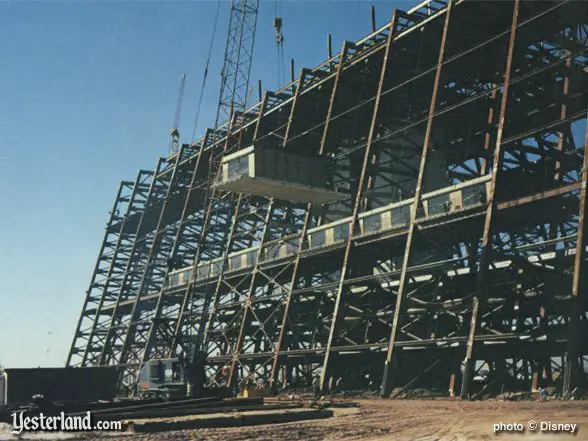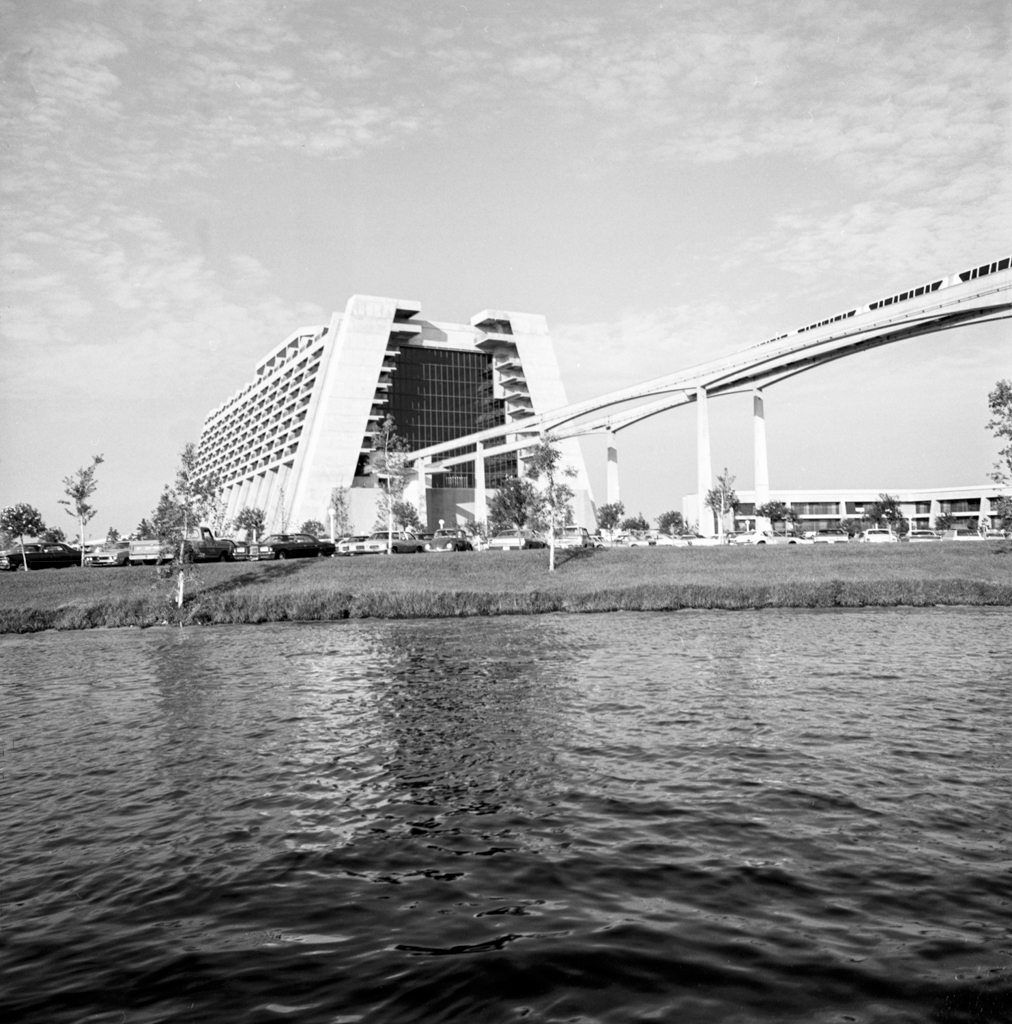FerretAfros
Well-Known Member
A monochrome color palette is a byproduct of brutalism, not a defining feature. Brutalism is typically defined by its exposed unfinished concrete structure (the "brut" right there in the style's name), which tends to be monochrome only because it's all the same material. It's a celebration of the structure itself as a means of ornamentation, rather than concealing the structure or disguising it to appear as another material (something Disney is typically very good at)a predominantly monochrome finish and concrete.
The Contemporary, on the other hand, by its very nature required steel construction for the giant trusses into which the prefab rooms (also steel) were inserted. Steel allows for a slim profile that minimizes the gaps between the rooms and is light enough to build on a swamp. Steel allowed the rooms to be constructed off-site and hauled to the building and lifted into place after completion. Steel allows for iconic atrium to retain a light and airy atmosphere. The same approach with a concrete structure would have been prohibitively bulky and heavy for such an already-large structure.

It was only after the steel frame was in place that the stucco facade was applied, in order to give a more streamlined appearance. That the facade disguises, rather than celebrates, the structure type is reason enough on its own that it cannot be considered a brutalist building.

If nothing else, let's remember that the Contemporary was famously built in collaboration with US Steel, as a means to highlight the possibilities of their products and construction techniques. Steel makes this structure possible. Brutalism is defined by its use of structural concrete. These two notions are in direct conflict with each other.
Also, as a point of clarification, stucco is not structural concrete. It holds no structural value and is notorious for not even being able to support itself and falling off of buildings (see also: current situation at Keystone Clothiers in DHS). A building wrapped in stucco is very different than one made from concrete.



